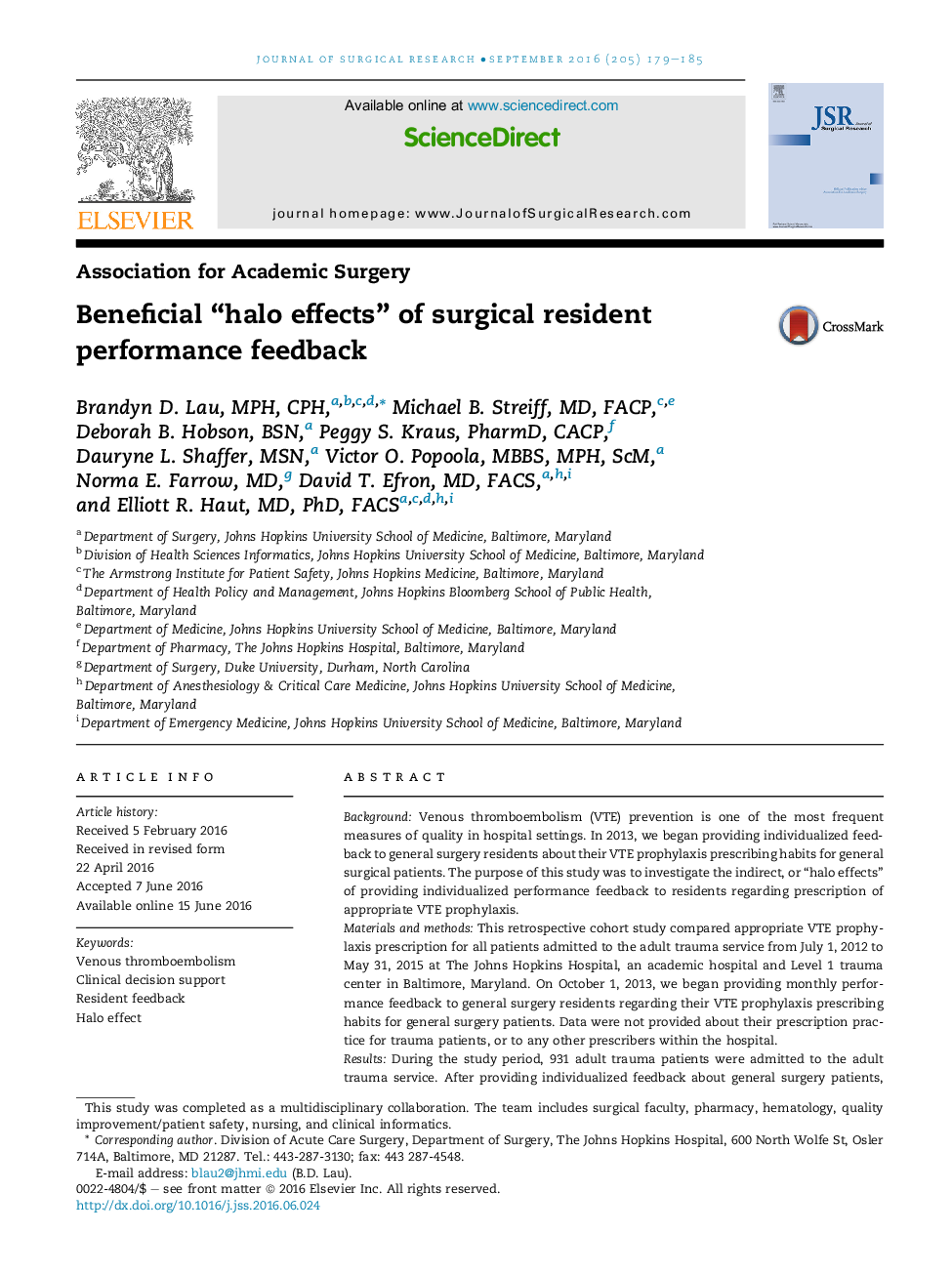| Article ID | Journal | Published Year | Pages | File Type |
|---|---|---|---|---|
| 4299305 | Journal of Surgical Research | 2016 | 7 Pages |
BackgroundVenous thromboembolism (VTE) prevention is one of the most frequent measures of quality in hospital settings. In 2013, we began providing individualized feedback to general surgery residents about their VTE prophylaxis prescribing habits for general surgical patients. The purpose of this study was to investigate the indirect, or “halo effects” of providing individualized performance feedback to residents regarding prescription of appropriate VTE prophylaxis.Materials and methodsThis retrospective cohort study compared appropriate VTE prophylaxis prescription for all patients admitted to the adult trauma service from July 1, 2012 to May 31, 2015 at The Johns Hopkins Hospital, an academic hospital and Level 1 trauma center in Baltimore, Maryland. On October 1, 2013, we began providing monthly performance feedback to general surgery residents regarding their VTE prophylaxis prescribing habits for general surgery patients. Data were not provided about their prescription practice for trauma patients, or to any other prescribers within the hospital.ResultsDuring the study period, 931 adult trauma patients were admitted to the adult trauma service. After providing individualized feedback about general surgery patients, general surgery residents' prescribing practice for writing appropriate VTE prophylaxis orders for adult trauma patients significantly improved (93.9% versus 78.1%, P < 0.001). Prescription practice significantly improved among all other prescribers although they did not receive any specific individualized feedback, (84.9% versus 75.1%, P = 0.025); however, practice was significantly better among general surgery residents versus other providers (93.9% versus 84.9%, P = 0.003).ConclusionsThere is a beneficial “halo effect” for patients treated by residents receiving individualized feedback about practice habits. Individualized feedback regarding practice habits for one patient type has both a direct and indirect effect on the quality of care patients receive and should be implemented for all providers.
